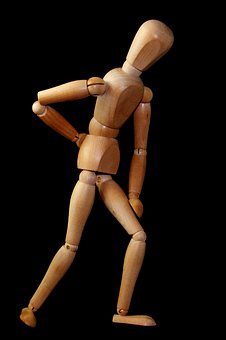Sciatica – All You Wanted to Know
Sciatica is one of those problems that can produce adverse effects on your quality of life. It is capable of making your favorite activities or pastimes less enjoyable. It gives rise to pain sensation, which differs in severity.
Now, it is possible that you have questions on this condition that you have always desired to have answered. In this series, we make an attempt to present everything you may have always wanted to know about sciatica in simple, clear language.
What is Sciatica
It is possible that some people might think that this is yet another medical disorder to worry about when they hear the word “sciatica.” It is not. This is not a medical diagnosis, but a symptom.
Sciatica is a sign of an underlying medical condition. The term describes symptoms that accompany leg pain, which originates in the lower back and spreads downward.
It is an indication of a problem with the sciatic nerve.
It is commonly accepted that sciatica is not a medical diagnosis, particularly when it describes pain going down to the leg from an upper region. But some people use the term to specifically describe a nerve dysfunction, in which case it can be considered a medical diagnosis.
Sciatica is more of a problem among adults. It is common among middle-aged individuals, especially those in the age range of 40 to 50. Cases of the discomfort are rarely seen in people younger than 20.
People often use this term loosely. As a result, the estimates of people who have it can vary widely. Estimates have it that up to 43 percent of the population may have the challenge at a time.
A popular belief is that this complaint develops gradually. But, sometimes, the onset can be sudden as a result of strenuous activities such as heavy lifting.
Sciatica Pain
Sciatica is synonymous with pain. The nature of this varies. Also, the level of discomfort and its frequency are not the same across all individuals.
Sciatica pain is usually noticed only on one side of the body, affecting your leg and/or buttock. Although less common, this may affect both sides of the body in some cases, depending on the specific cause.
Pain spreads out towards down to the leg or legs, possibly extending to the feet and toes. The kind of leg pain affected individuals experience may be tingling, burning, or searing. There are often complaints of numbness, weakness, or difficulty in moving the affected leg or foot as well.
People with sciatica may experience greater pain sensation when in a sitting position. They can also have lower back pain, although this does not occur in everyone.
Some persons may only feel slight, transient discomfort when having this symptom. But it is also capable of keeping other people from being able to carry out their regular, basic activities.
Connection to Sciatic Nerve
You may recall that we indicated previously that sciatica is a sign of the problem with a sciatic nerve. How?
The sciatic nerve is the largest of all nerves in your body. It is formed from nerve roots branching out from the spine. It starts in your lower back, passes through your buttock. This nerve extends down the back of your legs. Some parts of the nerve branch out in each of your legs to supply nerves to some other parts, including the foot and toes.
Commonly, the sciatic nerve begins at lumbar segment 3, or L3. But sciatica usually results from the compression of lumbar nerves L4 or L5. It can also be caused by the compression of the sacral nerve segment S1, S2, or S3. It may well be the effect of pinching of the large sciatic nerve itself.
Sciatica can occur when a dorsal nerve root, or radix, becomes pinched. In this instance, we talk of lumbar radiculopathy. Also, talk about radiculitis when this comes with inflammation.
The symptoms associated with sciatica appear when there is a compression or irritation of the sciatic nerve at a point in the proximity of its origin.
It is relevant to mention that the specific symptoms that show up can give an idea of what part of the nerve is pinched or irritated. For instance, you may suspect compression of the L5 when you find it hard extending the big toe.
What Causes Sciatica?
There are several possible causes for this problem. But the most notable is spinal disc herniation – a condition also known by such names as a herniated disc, pinched a nerve or slipped disc. It refers to the leakage of the soft inner portion of the spinal disk. This can cause irritation or compression of a lumbar or sacral nerve root.
Apart from spinal disc herniation, other possible causes of sciatica include:
• Spinal stenosis
• Degenerative disc disease
• Isthmic spondylolisthesis
• Sacroiliac joint dysfunction
Essentially, sciatica is a symptom of an underlying medical disorder which you need to deal with.
When to Seek Medical Attention
You could possibly resolve some cases of sciatica on your own through proper bed rest. Being active may also be beneficial in resolving the symptoms within weeks or months.
However, it is important to consult a medical professional for assistance in a timely manner when some particular symptoms or trend are observed. An example of such signs is gradually worsening weakness in the leg or legs. Some rare cases may require urgent surgical intervention.
We will discuss more regarding the causes, symptoms, and treatment options available for sciatica later in this series. You will also learn about exercises and home remedies that can help to deal with the problem.


